Between 1900 and 1908, the Russians built 25 Sokol (“Falcon”) class torpedo boats for the Russian Baltic Fleet. These boats served in various roles in the Tsarist Russian Baltic Fleet in WW1. The war went badly for the Russians and in 1917 the Russian Navy mutinied. The mutiny turned into a revolution and spread across Russia. As one result, Finland managed to secure her independence from Russia in the turmoil. However, tensions were still running high and soon after the declaration of independence the Finnish Civil War erupted. The socialists (reds) and the non-socialists (whites) clashed. Elements of the Russian Baltic fleet were still moored in Finnish harbours and the Russian sailors were sympathetic with the socialist side. However, the Finnish reds faced tough pressure from the whites, who had better military leadership.
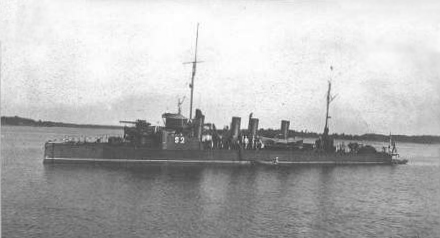
S2 (ex-Prozorlivy and ex-Gagara in Russian service) was a Finnish Sokol class torpedo boat that had been seized from the Russians after the Finnish Civil War 1918.
A German force landed in southern Finland to assist the Whites. The Russian fleet in Helsinki panicked when the Germans marched against Helsinki. They managed to secure a deal with the Germans, which allowed them to withdraw to Russia. However, only the largest ships managed to return to Russia, due to the harsh ice conditions of the Gulf of Finland. Numerous vessels were left behind to be seized by the whites and the German troops. On April 13, Prozorlivy (S2) was captured by the whites and was transferred to the Finnish navy, along with her five sister ships (Ryany (later S1), Poslishny (S3), Rezvy (S4), Podvizhny (S5) and No 212 (S6)).
Prozorlivy had been built at the Neva Shipyard in St Petersburg around 1900 (she was the fourth ship of the 25 in the Class) and was named Gagara (“Loon”). On March 9, 1902 the ship was renamed Prozorlivy (“Awake”). She was used as a minesweeper by the Russian Baltic Fleet after WW1 broke out. When the Bolsheviks evacuated the Russian Baltic Fleet ships from Helsinki, many smaller ships were left behind due to the ice conditions, and S2 was one of these.
Prozorlivy served for several years in the Finnish navy, initially supporting British operations against the Bolshevik navy. In accordance with the Treaty of Tartu of 1920, three of the Sokol class ships were returned to the Soviet Union in 1922. It was also planned that Prozorlivy would have been handed over, but the ageing ship was sold to Finland, where she was included in the Finnish navy. Prozorlivy was renamed S2 in 1922 and she continued to serve the fleet until October 4, 1925, when she was lost at sea with all hands. The loss of S2 was the worst peace-time accident in the Finnish navy and shocked both the navy and the country.
The last journey of Torpedo Boat S2
One of the Finnish Navy’s annual traditions was a naval visit to the Finnish coastal towns along the Gulf of Bothnia, the trip doubling as a training exercise for conscript sailors. In 1925, the gunships Klas Horn (commanded by komkapt E. Ekman) and Hämeenmaa (commanded by kaptl E. Rahola) as well as the torpedo boats S1 (kaptl A. Raninen) and S2 (kaptl T. Sjöman), embarked on one such journey under the overall command of Commodore Yrjö Roos (in Klas Horn). The plan was to visit all the coastal cities up to Tornio – that is the whole length of the southern archipelago and the west coast – and the group began the journey from Uusikaupunki to Vaasa on October 3, 1925. They traveled in line formation with one kabellängd (1/10 nautical mile) internal distance and at a speed of 12 knots. S2 was positioned furthest back in the formation.
The ships were to coal at Helsinki, so their coal bunkers were nor full. On the morning of the fateful day, Klas Horn‘s bunkers contained 38.5 tn of coal, Hämeenmaa 48 tn., S1 27 tn. and S2 29 tn. The torpedo boats consumed coal at about 0.8 tonnes per hour when at 12 knots, so the 15 hour trip to Vaasa should normally have used up about half the remaining coal in the bunkers. Initially everything went as planned. The fateful part of the voyage began from Lypertö on 3 October at 15.30 (the ships were supposed to be in Vaasa the following morning). The estimated time for this leg was 15 hours. The weather had been windy and rainy but when the ships sailed, it was fine. The sky was clear and the barometer was 751mm.
When the ships reached the open sea, weather conditions had not changed and nothing indicated the storm that was to come. There was a swell, the wind was 3-4 Beaufort NW with a clear and cloudless sky and good visibility with the ships maintaining a speed of 12 knots. It was anticipated that they would reach Vaasa by dawn of the following morning. At 18.10 the ships passed the Relandersgrund lightship and the distance between ships was doubled to two cable lengths. After darkness the wind increased to 5 B, and later developed into a fierce storm, which began to create difficulties for the ships. The crews had to increase the internal distance between the ships, and they were also forced to reduce speed.
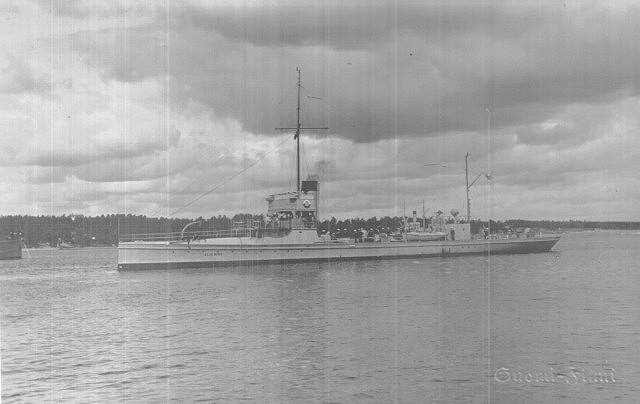
Built in Prussia in 1892, Klas Horn (ex-Posadnik) was an escort ship for the Russian Czar’s yacht. After the Russian revolution, the ship was taken over by the Finnish Navy and renamed Klas Horn, after a 16th century admiral. She initially served as a minelayer, but was rebuilt into a gunboat in the 1920s. Klas Horn ended her navy service in the 1930s and served as a mothership for sea surveying. The Finns mounted a large 102 mm gun on her, but it proved too big for the ship. During sea travel, the gun had to be tied so it would not make the ship unstable. The old ship’s seagoing qualities were also bad.
The surviving torpedo boat S 1 began to have trouble early in the night. One of the foremast stays broke and after that the mast swayed continuously and was in danger of breaking. S1 had to take down its radio antenna and was only able to communicate with light signals. After this an aft mast stay broke. Water began pouring into the boat causing electrical short circuits. The stern light went down and so S 2 could not follow directly in the wake and steered slightly to the port side.
By 20.20, when the fleet was located at 61o 22′ N, 20o 49’E, the wind had increased to 6-7 Beaufort and flag ship Klas Horn asked the torpedo boats, if they were able to maintain this speed. S2 advised that it had no problems, but S1 was not able to follow. Speed was then reduced to 10 knots at 20.50. At 21.25 with increasing wind, the speed was reduced to 8 knots, but S1 had troubles keeping even this speed. In S1, heavy waves had caused leaks in the anchor chain box and the compartment before it. Water began to leak from the chain box into a machinery storeroom. At first these could be pumped empty, but later the pumps became clogged and the compartments were filled. Other compartments also required pumping and this increased coal consumption. It was impossible to get coal to burn evenly and this also resulted in increased consumption.
At 21.25 the course was changed 20o closer to wind and at 23.18 the flag ship signaled by morse lights that the ships should ride the storm head to wind as best they could. These signals were poorly worded and not always understood. The storm finally dispersed the formation when they reached the Pori parallel. Klas Horn, which was the lead ship of the formation, turned into the wind and headed towards the Swedish coast, followed by Hämeenmaa. The torpedo boats tried to follow the bigger vessels but were lagging behind due to the high waves. The storm tore off S1’s anchor chain covers, letting in water. A faulty valve let water into S1’s engine compartment. The pumps initially kept the affected compartments dry but became clogged and ceased to be effective. Other compartments also began to leak and the pumps themselves relied on steam power, using more coal.
In the middle of the night, the wind speed reached hurricane force 48–55 m/s (12 on the Beaufort scale). The torpedo boats lost sight of the gun boats on Sunday morning about 02.00, but they remained together. The flotilla leader Klas Horn sent out a distress call on behalf of the torpedo boats. The rescue ship Protector, which was located in Vaasa, received the distress call through the Finnish headquarters in Helsinki, and the message was also received by the Swedish rescue vessel Helios. Both advised that they would come to the rescue. The ships of the formation were given orders to go on their own to the closest available harbor. The gun boat Klas Horn headed for the Swedish coast, the gun boat Hämeenmaa headed for Vaasa and the torpedo boat S1 planned to head for Mäntyluoto outside Pori. Klas Horn had reached Harnösand in Sweden at 04.00 and Hämeenmaa Vaskiluoto at 11.30. The gunboat was so deep in water that the stern compartments had to be pumped before the ship could sail to Vaasa.
At 03.30 S2 had increased speed and left S1, it is assumed that S2 was trying to rejoin the gun boats. At 04.00 the storm had increased to its full strength. S2 was only occasionally seen 5-6 nautical miles straight ahead of S1, whose situation was becoming critical due to lack of coal. S1 had to seek a safe haven on the Finnish coast, but change of course was impossible before dawn as waves could not be judged in the darkness. The stormy sea created big problems for the torpedo boats when their propellers were lifted too close to the surface. This reduced their efficiency and what worsened the situation was the fact that the S2′s bearings were worn out, which caused a lot of vibrations in the ship and threatened to open up a leak where the shaft exited the hull. Both of the torpedo boats began taking in water in the high seas. This was mainly due to the construction of the superstructure. The coal was also slowly running out since the crew had to feed more into the boilers than usual due to the high seas.
At 06.00 on October 4th, S1 began its risky turn and at 06.20 it was sailing eastwards to Mäntyluoto. The course change took place at 61o 45′ N, 20o 04,3′ E, the wind was 10 Beaufort. At 0700, S1 had nine tons of coal left. At 8.30 the wind increased to 11 B and S1 had to heave to, pointing into the wind. A half hour later the boat was able to continue to east, but meanwhile the wind speed increased further. At 12.00 the coast was seen and at 1230 Skarvörenin was identified. The boat was finally able to pin down its location and had to sail southwest to reach Mäntyluoto. The engine room personnel had to operate knee-deep in surging water and there was only 3 tons of coal left. So close to the leeward shore the sea was heavy and a single wave would move the boat 50 metres sideways. At 13.50 S1 turned east and began to approach Mäntyluoto harbour with hardly any coal left. When the boat finally made harbour at 14.40 there were only two 80kg sacks of coal left – the 160 kg remaining was good for only 12 minutes consumption.
S2 also tried to make Pori, but the engines and the pumps could not function properly and the leaking worsened. Land was in sight and the radio operator of S2 was in contact with the radio station in Vaasa almost until the moment of disaster.
Some of the last radio signals of S 2 on 4th October were:
- 00.52 To Commander of Coastal Fleet: So far all is well. Sjöman.
- 01.10 To Commander of Coastal Fleet: Water coming in to forward compartments and from there to machinery stores. Must stop machines for pumping out water. Sjöman.
- 04.30 Answer to Härnösand enquiry via Commander of Coastal Fleet: Rescue ship not required yet. Sjöman.
- 04.40 To Commander of Coastal Fleet: Suggest reduce speed. Can not follow that fast. Sjöman.
At 06.00 half of the radio aerials of Klas Horn were lost and maintaining radio communications became difficult.
- 07.00 To Commander of Coastal Fleet: Where are you? Can not make speed over ground. What shall we do? Sjöman.
- 07.22 SOS – SOS – SOS. Here torpedo boat S2 filling lat. 61o40′ long. 20o15′. Sjöman.
To this, it was responded that the rescue ship Protector from Vasa (Finland) and Helios from Härnösand (Sweden) had been alerted.
- 07.55 To Vaasa radio station: Turned around at 7.40. Trying to reach a harbour on the finnish side. Sjöman.
- 08.28 To Vaasa radio station: Situation difficult, because foreship filled with water.
- 09.44 To Vaasa radio station: Here is everything upset, even fire in torpedo compartment.
- 10.19 To Vaasa radio station: It is really blowing here, nothing to boast about, on the contrary it is scaring.
- 12.00 To Commander of Coastal Fleet: Torpedo boat S2 sailing course 110 about 15 miles west from Reposaari. Situation aboard still bad and on the other ships we do not know anything, radio apparatus in poor condition. Sjöman.
- 13.05 Answer to Vaasa radio station enquiry: We have here such interference that nothing works. I believe we can reach harbour before assistance arrives.
- 13.22 Vaasa radio station calls S 2 that replies: Cannot work now.
The last message from the ship arrived at 1.22 pm, barely two minutes before she sank. The answer from the radio operator on S2 to the call from Vaasa was short: “I cannot work now”. Pilot Aalto at the pilot station tower at Reposaari observed the struggle of the ship in the waters between Outoori and the Säppi lighthouse. The warship was thrown violently from one wavetop to another until a breaker rolled completely over the ship.. It was last seen half capsized with bottom plates gleaming in the sun after which the boat disappeared from view at 1.25pm. Later the pilots learned that it had been the torpedo boat S2 that they had observed. The torpedo boat’s crew of 53 were lost in the disaster.
The loss of S2 was a great shock to the Finnish nation and to the young navy. An intense debate about the underlying reasons followed with many questions asked. One thing that was not questioned were the sailing skills of S2’s captain, who was an experienced sailor who had served aboard several commercial ships for many years and was rate as Master. An investigation panel was appointed to find the reasons for the disaster. At the place of the sinking, the Outoori shallows, the seabed rises sharply and creates short sharp breakers, especially when the wind is coming from the west or northwest. This was later considered to be the main cause of the disaster. Further, the seagoing qualities had not fully been researched in the old Russian ships. There were, for example, no stabilization tables or ballast calculations for the type. The investigation also found that the crew had not obtained updated weather data, although this had been available. The investigators in particular criticized the leadership of the commander of the formation, Yrjö Roos. Roos had a reputation of being very stubborn and had probably tried to get all the ships to Vaasa where they were expected the following day. The order to the formation to make for harbour was given very late, and when given, was very unclear. The ships’ captains interpreted it in different ways. In the publics’ opinion, Roos was the cause of the loss of S2. One year later, Commander Roos was on a routine trip with one of the navy’s A-boats to Örö. Upon arrival, Roos was found dead in his cabin. The investigation revealed that he had died from carbon monoxide poisoning from a faulty exhaust pipe, an incident which sparked numerous conspiracy theories.
1=Bridge, 2=Forepeak, 3=anchor chain compartment, 4=forecastle (crew mess), 5=machine room, 6=crew compartment, 7=entry to torpedo warhead magazine, 8=torpedo warhead magazine, 9=forecastle (crew mess), 10=gun magazine, 11=Petty Officers Mess, 12=drinking water tanks, 13=boiler room, 14-boiler room, 15-engine room, 16=Captain’s cabin, 17=Officers Mess, 22=gun magazine, 23=machinegun ammunition magazine, 24=Engineer Petty Officer’s Mess, 25-Chief Engineers Cabin, 26=Engineer’s Cabin, 30=Storage, 31=Non-Commissioned Officers Mess, 32=Propellor Shaft, 33=Radio Antenna
The influence of the disaster
The loss of S2 created front page headlines at the time and upset both the general population, the personnel of the Finnish navy, and Finnish seamen in general. The accident and the following debate led to the creation of the Finnish Navy Association in 1926. This organization was influential in the fleet renewal question and it had a great influence on the decision on the “Naval and Merchant Shipping Act” of 1928, as we will see. The 23 bodies that were found inside the ship after salvage operatuibs were buried at the Reposaari cemetery in a joint grave on August 15, 1926. A statue over the dead sailors was raised at the Reposaari church one year later. The statue was made by the sculptor Wäinö Aaltonen and was named “Mrsky” (Storm). The day of the disaster is also remembered by the Finnish navy annually.
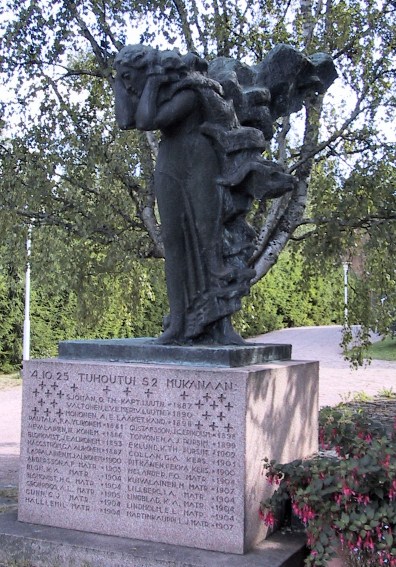
“Myrsky” (Storm): memorial to the sailors who lost their lives in Torpedo Boat S2 on October 4, 1925.
The statue can be seen at the church at Reposaari. The hexagonal wooden church and the belfry were built in 1876, the altarpiece is from 1906 and was painted by Felix Frang. The ceiling art was painted by Lennart Segerstråle in 1928. The church is open for public in the summer, but only for part of the day. Ask for more detailed information about summer opening hours at the tourist information of Pori.
A single 456mm (18.0in) torpedo tube from torpedo boat S2 can be found at the Manege Military Museum in Suomenlinna – the torpedo tube belonged originally to the Russian torpedo boat Bditelnyj, which struck a mine and sank on the 27th of November 1917. The torpedo tubes of the Bditelnyj were salvaged in 1919, and mounted on the torpedo boats S1 and S2 in early 1925. S2 was salvaged in 1926, and this torpedo tube was placed on display in Suomenlinna in 1930. It was restored in 2009-2010 and is now on display in the Manege Military Museum. The torpedo tube was manufactured by the Vulkan shipyard in Turku, serial number 48.
The Manege Military Museum was opened to public June 1, 1989. The original exhibition consisted mainly of heavy weapons from Finnish wars against Soviet Union in 1939-1944. There have also been arranged special exhibitions, for example in 2003-2004 about Finnish submarines and in summer 2011 about the submarine Vesikko. The Manege’s collections include a German 88mm Flak 37 Anti-Aircraft gun and a British Vickers- Armstrong 38 light tank. Both were used by the Finnish Army during the wars. In summer 2012 there was opened a new exhibition From Autonomy to Atalanta – an exhibition on Finnish military history. For more information on the Suomenlinna Sea Fortress and associated museum, please use this link to the Suomenlinna Museum.
 Copyright secured by Digiprove © 2013 Alternative Finland
Copyright secured by Digiprove © 2013 Alternative Finland


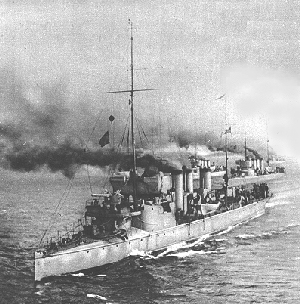
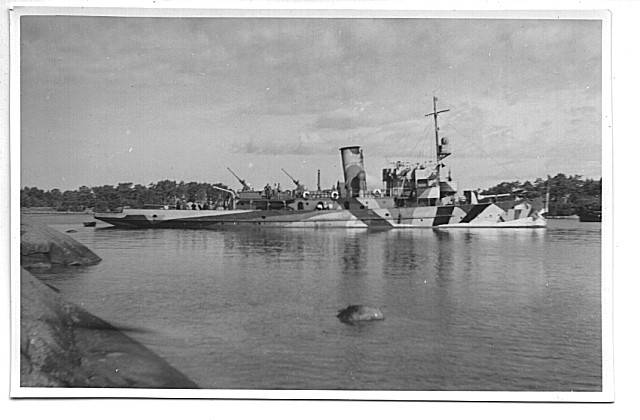
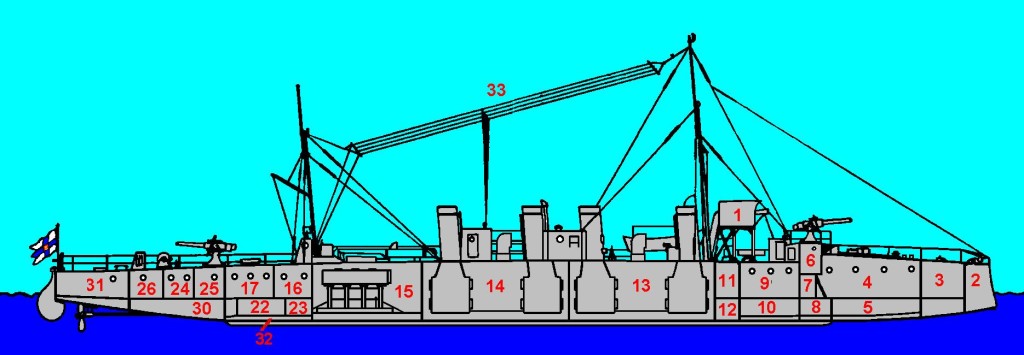
One Response to 1925 – The Last Journey of Torpedo Boat S2